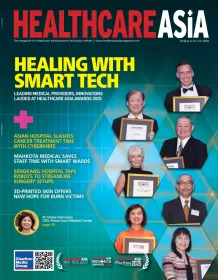Psychological safety amongst key areas in healthcare innovation
Three technology startups are on the run to provide Singapore with innovative healthcare transformation.
Considering psychological safety in decision making paves the way to cultivate a spirit of innovation in healthcare, according to the Centre for Healthcare Innovation (CHI).
Associate Professor Tan Cher Heng, CHI Executive Director, a psychologically safe environment allows free idea sharing, calculated risk-taking, and learning from failures.
“We take calculated risks, and we go ahead with the trials and experimentations. And we learn from those failures. And this is the kind of approach that we take for all the work that we do to support our partners and our users in their innovation journey,” he said.
Tan added that the CHI triumphs on bringing together people from different industries and expertise, having a collaborative learning, where people learn, share, and do, aside from being very focused on developing innovators of the future.
“So we have developed a suite of programs that will help empower them, provide them with the skill sets to be able to innovate effectively,” he said, saying that this approach is vital in an industry where the stakes of innovation are high, and the impact on patient care is direct.
Tan explained that the CHI evaluation framework extends beyond clinical safety and efficacy to include business considerations, technical and operational efficiency, and integration. It's a comprehensive approach that aids decision-makers in procurement and investment processes.
“The purpose of this is to look beyond just the clinical safety and efficacy, but to assess other factors that are important for implementation, such as the business considerations, technical as well as operational efficiency as well as integration,” he said.
He mentioned that addressing gaps in healthcare tech is done through needs-driven innovation where the practitioner, the clinician, or the nurse, comes with a problem that needs to be solved. This approach ensures that solutions are not only innovative but also grounded in real-world needs and safety standards.
“We then try to find a solution and develop a prototype implemented in a real world setting in a controlled environment where we can ensure that they're safety and ethical standards that will protect the interests of the patients that we treat,” he said.



















 Advertise
Advertise





